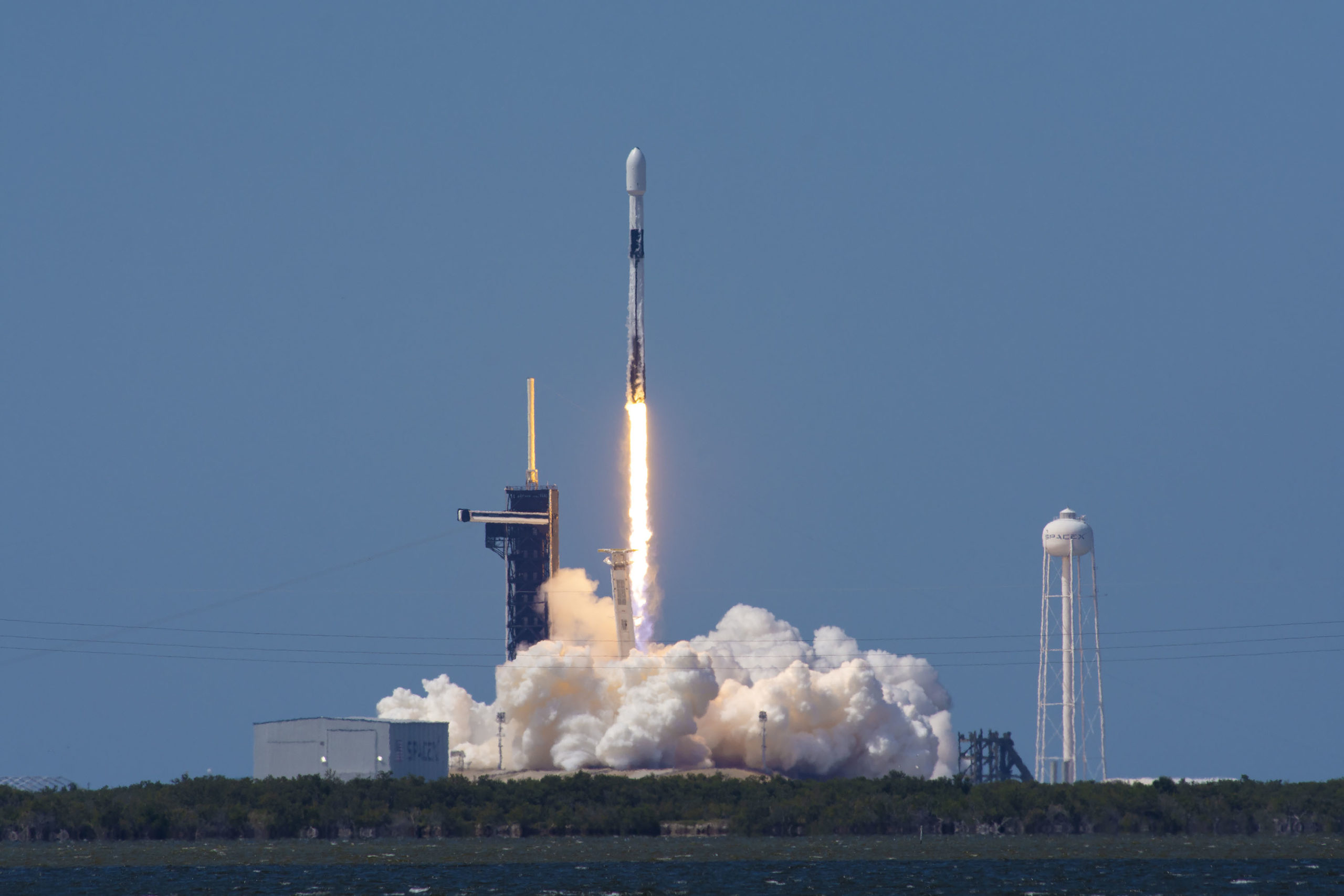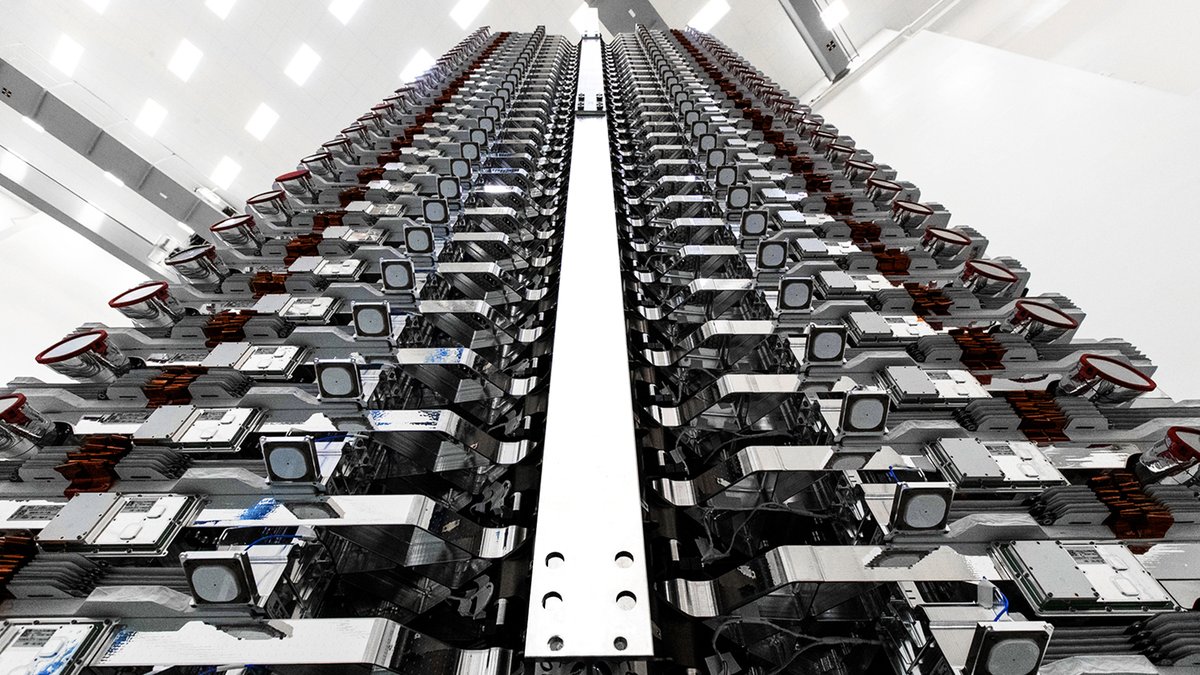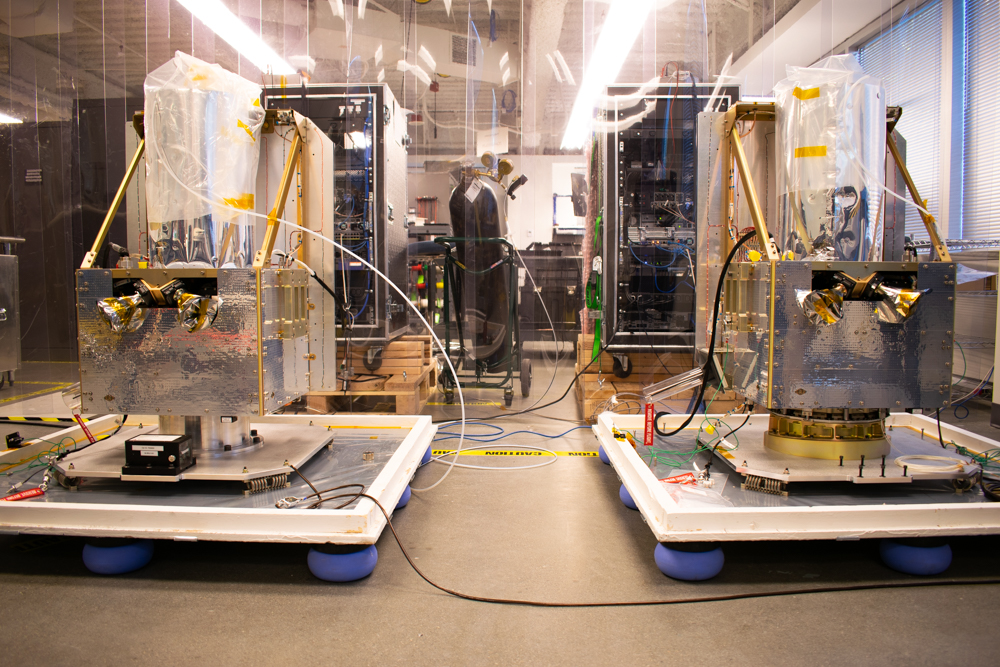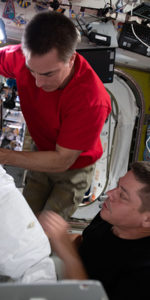
Four weeks since the triumphant ride to orbit of Dragon Endeavour crewmen Doug Hurley and Bob Behnken, the Kennedy Space Center’s (KSC) historic Pad 39A will reverberate again to the roar Merlin 1D+ engines as early as 4:18 p.m. EDT on Friday, 26 June, to deliver dozens of small satellites into low-Earth orbit. Aboard the Falcon 9—which will utilize the flight-proven B1051 core, marking the third occasion in three months that a booster has flown a fifth time—are SpaceX’s tenth dedicated batch of Starlink satellites and a pair of Earth-observation satellites provided by Herndon, Va.-based Spaceflight Industries, Inc for their customer BlackSky.
It comes only days after Spaceflight announced a major new contract with SpaceX “to secure rideshare capacity on multiple launches” through late 2021.
FOLLOW AmericaSpace’s Live Launch Tracker HERE!
Chomping on the heels of its sisters B1048 and B1049, which completed their own fifth launches earlier this year, B1051 has a particularly chequered history. Assuming a successful mission on Friday, it will have staged its five flights in only 15 months, significantly shorter than the 20-21 months achieved by its siblings. It first launched in March 2019 to deliver SpaceX’s historic Demo-1 Crew Dragon to the International Space Station (ISS), then went on to loft Canada’s three-satellite Radarsat Constellation Mission (RCM) the following summer and a pair of Starlink batches in late January and 22 April 2020.
B1051 will also become only the third Falcon 9 core to record three launches in a single calendar year. And an on-time liftoff will give it one of the shortest turnarounds — 65 days—between flights of a reflown Falcon 9 core. In doing so, it falls just shy of current record-holder B1056 which recorded 62 days between two of its own launches in December 2019 and its untimely end-of-mission demise in February 2020. B1051 was put through a customary Static Fire Test of its nine Merlin 1D+ first-stage engines on Wednesday evening.
The principal payload for Friday’s mission is the next instalment of low-orbiting Starlinks, marking the tenth batch of these flat-packed internet communications satellites to be launched atop a Falcon 9 since May of last year. But the mission also carries two “rideshare” passengers, both dedicated to Earth observations and flown on behalf of Spaceflight’s Earth-imaging service, BlackSky.

Spaceflight Industries, Inc., previously flew its SSO-A SmallSat Express payload—a record-setting 64 cubesats and smallsats—atop a dedicated Falcon 9 in December 2018. This haul of satellites ran the gamut in terms of objectives, from military to civilian technology demonstrators and communications and data-relay pathfinders to life sciences, terrestrial observations and radar-imaging, space science, solar physics and astrophysics.
Two of those satellites were the BlackSky Global-1 and Global-2 payloads, which can provide ground-imaging resolution as fine as 3.3 feet (1 meter) from an altitude of 310 miles (500 km). A further two satellites, Global-3 and Global-4, were launched in June last year atop an Elektron-KS booster from Onenui Station on New Zealand’s North Island. And the 120-pound (56 kg) Global-5 and Global-6 will ride to space on Thursday, the fifth and sixth satellites in what BlackSky anticipates will eventually evolve into a 60-strong constellation with the capacity to rapidly revisit the same locations on Earth.
According to Spaceflight, its BlackSky rideshare payload is dubbed SXRS-1, “to signify its first rideshare with Starlink” and outlined that the increased tempo of these SpaceX missions “provides smallsat customers with a new, reliable and routine launch option”. It noted that it had designed “the adapters and harnessing” for the rideshare payloads and executed their integration into the launch vehicle. “SpaceX has proved schedule consistency and launch reliability through its Starlink missions, even during this unprecedented time, and we are eager to offer it as a launch option to our customers,” said Curt Blake, president and CEO of Spaceflight. “We seek to maximize capacity on every launch because any space available is an opportunity for our customers to complete their missions.”

Concurrently, the company last week announced that it had inked agreements with SpaceX “to secure rideshare capacity on multiple launches”, which will allow for the manifesting of payloads on “several” Falcon 9 missions through the end of 2021. Citing the benefits of increased launch flexibility, Mr. Blake explained that the agreement would allow Spaceflight “to package multiple payloads onto a single port to significantly reduce the cost per spacecraft for the end-customer”. It was added that having capacity on a wide range of launches was imperative for potential rideshare passengers, to hedge against the inevitability and unavoidability of launch delays.
And one characteristic cause of such delays is the weather, which thus far appears iffy for Friday afternoon’s launch. According to the 45th Weather Squadron at Patrick Air Force Base, there exists a 60-percent likelihood of acceptable conditions. “The Atlantic ridge axis will be located just south of the Spaceport for the next several days, slowly beginning to creep northwards with weakening southwest flow heading into Thursday,” it was noted. “This pattern will favor afternoon showers and thunderstorms with daytime heating and the prevailing offshore flow.” The main concerns include potential violations of the Cumulus Cloud Rule, Lightning Rule and Anvil Cloud Rule.
That said, the Autonomous Spaceport Drone Ship (ASDS), “Of Course I Still Love You”, put to sea last Friday, bound for B1051’s anticipated return point some 390 miles (630 km) downrange of the Cape.
.
.
FOLLOW AmericaSpace on Facebook and Twitter!
.
.
Missions » Commercial Space » Starlink »




